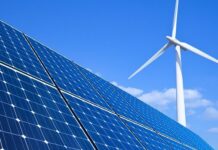It is well to be noted that on April 8, 2024, a solar eclipse will begin on Mexico’s Pacific coast around 11:07 a.m. PDT, traversing across parts of the U.S. as well as Canada until 5:19 p.m. EDT. Since the sky is going to darken completely in the path of totality for around six minutes, forecasters are indeed looking out for potential effects as far as solar energy generation is concerned.
The last eclipse in the U.S. took place in 2017 and apparently did not have much effect on solar energy production, but solar contributed just 1.3% to the electrical grid at that time, as per the U.S. Energy Information Administration- EIA. The EIA goes on to estimate that solar will offer 6% of U.S. electricity generation in 2024, which is quite a major increase over 2017, and enough so as to cause some concern when it comes to the eclipse effect.
Solcast, which happens to be a solar modeling as well as forecasting company owned by DNV, went on to report that the effect on solar generation throughout the U.S. could be greater than the previous eclipse because of the increased solar power generation.
Solcast went ahead and used its clear-sky irradiance modelling, assuming no presence of clouds or even smoke. Because of the ongoing growth in national solar capacity, the grid impact of such major solar events happens to be increasing, and this eclipse will indeed have a greater impact on power generation than the previous eclipses. The company anticipates that the complete effects of the eclipse are going to cost as much as 16% of the daily total clear sky irradiance across some of the areas.
Grid operators happen to be preparing for a worst-case scenario, which could be a perfectly sunny day when the solar would normally be feeding consistently into the grid. In areas that are in the path of totality, solar generation will reduce and thereby be cut to zero, so as to ramp back up again a few minutes later.
As per Solcast, the maximum duration will be more than 90 minutes of impacted generation and a complete loss of up to six minutes. The effect throughout the country will be a faster ramp rate than usual, which is the rate at which the solar generation reduces and then picks up again.
It is well to be noted that across all the grids, Solcast anticipates calculated maximum losses of almost 39.9 GWh, out of which 16.2 GWh will get lost from household rooftop solar. While it is too early to anticipate cloud impacts, the effects when it comes to this eclipse will be quite prominent on solar generation all across the country, remarked the lead data scientist at Solcast, Dr. Hugh Cutcher.
So as to compensate for potential losses when it comes to solar energy flowing to the grid, grid operators will indeed have to be ready so as to rely on other sources in order to ensure grid stability, as was done in the 2017 and 2023 eclipse episodes.
Notably, the Texas utility ERCOT, for instance, is watching the event, as it goes on to offer power to 90% of the state as well as the state’s grid, which will be affected by the eclipse from 12:10 p.m. to 3:10 p.m. CDT, or across the peak production hours. As per Solcast, ERCOT could experience a dearth of almost 11% of normal generation.
ERCOT went on to post on X that it happens to be working on forecasting models so as to reflect decreased solar power production, which is similar to a sunset and also sunrise in the middle of the day, and doesn’t anticipate any sort of grid reliability issues during the eclipse.
Learning from what has happened before
Looking back at the 2017 eclipse that went on to obscure the sun for 76% of the Northern California and 62% of the Southern California areas on August 17, the EIA had gone on to estimate that over 21 GW of installed photovoltaic- PV systems would get affected. Utilities go on to anticipate that production when it comes to solar plants would dip by almost 66%, with a sharp downward ramp followed by a rapid ramp up. So as to reduce strain on the electric grid, the California Public Utilities Commission President at that point in time had urged residents to slash their energy usage between 9 a.m. and 11 a.m. on the day of the eclipse.
Due to the fact that ramping down and up had little deleterious effect, the call to curb electrical usage is not likely to take place with the 2024 eclipse. As a matter of fact, during the 2017 eclipse, which also affected Georgia, Georgia Power went on to register barely a blip. Georgia Power had in fact livestreamed the eclipse as well as watched solar power decrease significantly for three minutes during the eclipse’s totality, yet there wasn’t any failure in the grid.















































